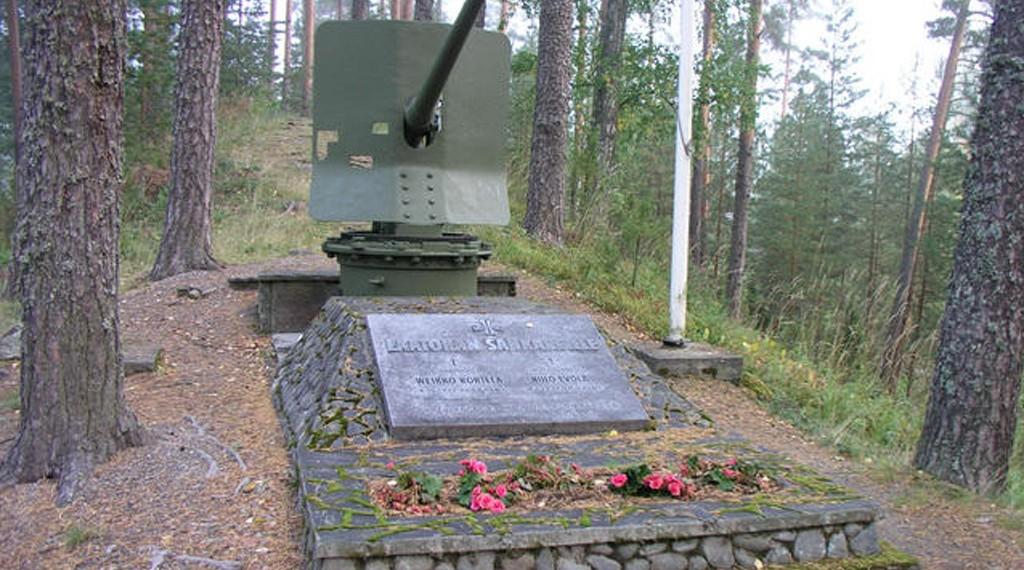Memorials
Information on memorials in Parikkala.
Memorial to the battle of Tyrjä (Tyrjän taistelun muistomerkki) (Location: next to the church in Parikkala)
The battle of Tyrjä took place 30.6.-4.8.1941. The battle of Tyrjä is among the biggest battles in the Ladoga Karelia area during the Continuation War. The troops consisted of the 2nd Division which was led by Major general Aarne Blick. The division’s infantry regiment 7, better known as the Tyrjä regiment, was the main operator in the battle. Altogether over 10.000 soldiers took part in the battle. Over 400 men were killed. The total number of killed and wounded was nearly 1.900 men. The memorial to the battle of Tyrjä is located near the Parikkala church, by the starting point of the old church road leading to the village of Tyrjä. The memorial is designed by Artist Professor Taisto Ahtola, and it was opened to the public on August 4, 1991. The memorial was acquired by the veterans of the 2nd Division.
Memorial to the defenders of Ladoga (Laatokan puolustajien muistomerkki) (Location: Sikoharju, close to the municipal office in Parikkala)
The memorial consists of a coastal gun on a stand, and it has has been designed by artist Mauno Hartman. The memorial was opened to the public on August 20, 1961. It stands on the gravesite of Second Lieutenant Veikko Kortela and Corporal Niilo Evola, who were the last to fall during the Winter War in Uukselanpää by the lake Ladoga on March 12, 1640. After the peace treaty, the Finns withdrew, took the deceased with them, and left them at the municipality closest to the new border. The memorial reads: “To the heroes of Ladoga”.
Memorial to the Knights of the Mannerheim Cross (Mannerheim-ristin ritarien muistomerkki) (Location: Outside the Parikkala municipal office building)
A memorial for the Parikkala-born Knights of the Mannerheim Cross. Opened to the public on September 19, 1994.
Memorial to the deceased war heroes (Sankarivainajien muistomerkki) (Location: Parikkala church yard)
Memorial with a cross motif, designed by landscape architect Pentti Ahola. Opened to the public in 1963. In memory of the 313 deceased in the Winter War and the Continuation War.
Memorial to the ones left in Karelia (Karjalaan jääneiden muistomerkki) (Location: Parikkala church yard)
The memorial was designed by Armi Siitonen in 1980. The Karelia Association in Parikkala supplied the memorial in memory of the deceased left behind in Karelia.
Memorial to the Liberation War (Vapaussodan muistomerkki) (Location: Parikkala church yard)
The granite memorial holds the names of the 29 people deceased in the Liberation War in 1919. The designer is architect W. Keinänen.
Memorial to the Border Guard battalion (Rajajääkäripataljoonan muistomerkki) (Location: near the library in Parikkala)
The memorial is designed by Leo Kojo, Knight of the Mannerheim Cross, representing the South-East Finland Border Guard Guild. The memorial is built in memory of the 2nd Border Battalion in September 9, 1984.
Memorial to Pietari Hannikainen (Pietari Hannikaisen muistomerkki) (Location: Parikkala city centre)
Pietari Hannikainen was a supporter of Finnish language, a writer and a surveyor. The memorial to Pietari Hannikainen was opened to the public during the first local heritage event in Parikkala in 1956. The memorial is located by the Summer Theatre, the commemorative plaque by the Parikkala library.
Memorial “Rocks of Suffering” (Kärsimysten kivet) (Location: Koitsanlahden hovin pihassa)
The text in the memorial reads “Freedom is more valuable than the land”. The memorial is located in the park of Koitsanlahti manor, in a scenery of historic and cultural importance. The memorial is designed by art teacher, artist Armi Siitonen, and it was opened to the public in July 1958, 100 years after the end of the compulsory workday duties of the peasants at the manor house. The memorial was built together with the municipalities of Parikkala, Saari, Simpele, Uukuniemi and Kurkijoki.
Memorial to the Canal Diggers (Kanavankaivajien muistopatsas) (Location: Saari centre)
The memorial to the diggers of canals in Saari during the 19th and 20th centuries was designed by Antti Neuvonen. The memorial depicts men of three generations digging the canals by hand.
Field hospital
was located in Kirjavala village during the Second World War. The field hospital was visited, for example, by Marshal Mannerheim. Adolf Ehnrooth spent a night there as a young Major. Nowadays the building is privately owned.
Memorial to the Border Guard Company (Rajakomppanian muistomerkki) (Location: Saari)
The 53rd Border Guard Company was established in Saari on June 10th, 1941. At that time, Finland started to fight for its home, religion and independence. The South-East Finland Border Guard Guild opened the memorial to the public on June 10th, 1981.
Memorial to the Fallen War Heroes of the Winter War (Talvisodan sankarivainajien muistomerkki) (Location: Saari church)
An old, wooden memorial was replaced by a stone memorial in 2008. The text in the memorial reads: Pro Patria the Fallen War Heroes of the Winter War from the municipality of Saari.
Memorial to the Fallen War Heroes “On the way to peace” (Sankarivainajien muistomerkki “Rauhan taipaleella”) (Location: Saari chapel)
Bronze memorial designed by the Saari-born sculptor Antti Neuvonen. Opened to teh public on December 6th, 1986.
Memorial to the Fallen War Heroes “The road to peace” (Sankarivainajien muistomerkki “Rauhan teille”) (Location: Uukuniemi church yard)
Opened to the public in 1949.
Memorial to the Battle of Ristlahti (Ristlahden taistelun muistomerkki) (Location: near to the Uukuniemi church)
The battle of Ristlahti took place in 1614. The Finnish Hannu Munck collected an army of soldiers and peasants and beat the Russians in the battle. The victory secured Ladoga Karelia as part of Sweden. The memorial to the battle was located in a place that nowadays belongs to Russia. The original memorial was designed by architect Elias Borg, and the reliefs were made by sculptor Lauri Leppänen. The original memorial was opened to the public on August 22nd, 1937. The new memorial that is located in the Finnish side of the border, in the church hill of Uukuniemi, was opened to the public in the summer of 1982. The ceremony was led by the Minister of Defence Juhani Saukkonen. The new memorial contains parts taken from the old, original memorial.




